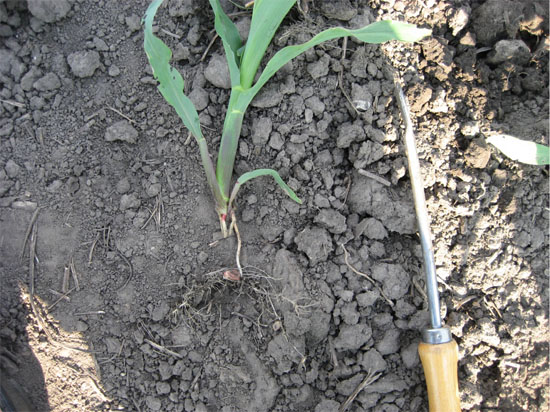 M.Feyera Liben, S. Charles Wortmann, T. Kindie Fantaye
M.Feyera Liben, S. Charles Wortmann, T. Kindie Fantaye
Department of Agronomy and Horticulture, University of Nebraska-Lincoln, Lincoln, Nebraska, United States
Key words: Risk, Dry soil planting, Climate variability, Dryland crop production, Vertisol.
Abstract
Dry soil planting is practiced in response to variable rainfall onset in Ethiopia to maximize use of the full season. Rainfall data of >30 years for seven locations were used to evaluate dry soil planting opportunities on Vertisols. Three rainfall related risks were evaluated: (i) seed lies in dry soil without imbibing water for >20 days (Risk I); (ii) rainfall causes germination but fails to support growth and many seedlings die (Risk II); and (iii) when planting is delayed until after onset of rains by not dry soil planting sorghum or maize and because the fields are too wet to prepare and plant (Risk III). Risk I and II are associated with potential failure of dry soil planting while Risk III is associated with negative consequences of not dry soil planting.  Mean probabilities of occurrence of risks associated with dry soil planting were, respectively: ≥50% and ≤30% for Risk I in 25% and 56% of the timeframe; ≥50% and ≤30% for Risk II in 35% and 22% of the timeframe; and ≤30% for Risk III in 90% of the timeframe. The cumulative value of the three risk types were represented by two risk indexes. Dry soil planting was found to have a high probability of success, even when done before the expected onset of rainfall for several locations. Farmers cannot avoid all risk types and risks occur with wet soil planting as well. Guidelines to timeliness of dry soil planting for early crop establishment were developed for each location.
Mean probabilities of occurrence of risks associated with dry soil planting were, respectively: ≥50% and ≤30% for Risk I in 25% and 56% of the timeframe; ≥50% and ≤30% for Risk II in 35% and 22% of the timeframe; and ≤30% for Risk III in 90% of the timeframe. The cumulative value of the three risk types were represented by two risk indexes. Dry soil planting was found to have a high probability of success, even when done before the expected onset of rainfall for several locations. Farmers cannot avoid all risk types and risks occur with wet soil planting as well. Guidelines to timeliness of dry soil planting for early crop establishment were developed for each location.
Get the original articles in Source: Volume 6, Number 4, April 2015 – IJAAR
Journal Name: International Journal of Agronomy and Agricultural Research (IJAAR)
Published By: International Network for Natural Sciences
